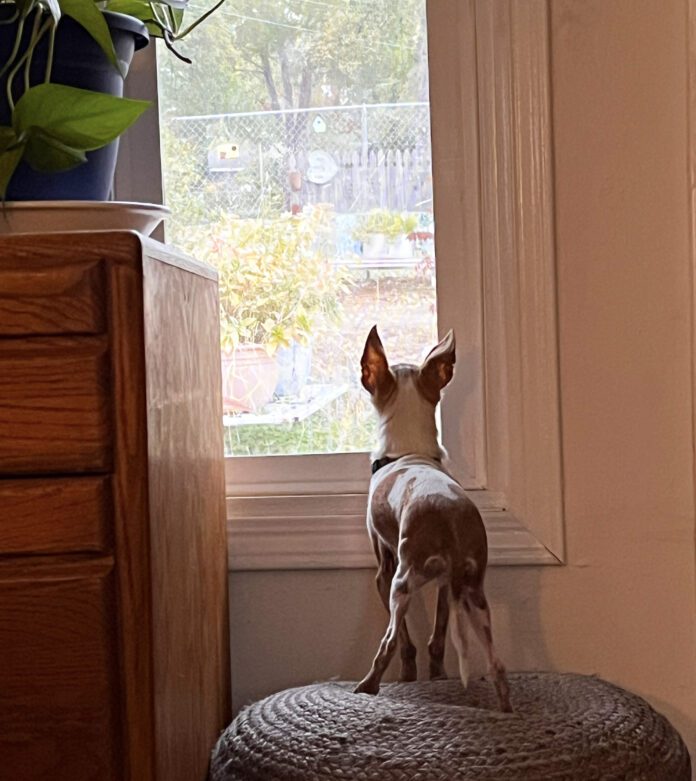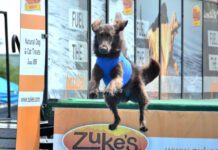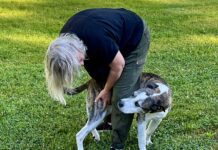By now, you’ve all probably heard something about the mystery respiratory illness afflicting dogs in various parts of the country. Symptoms include fever, lethargy, nasal or eye discharge, difficult or rapid breathing, mild to moderate tracheobronchitis, loss of appetite, and dehydration. In some cases, the illness progresses to pneumonia and symptoms are not responsive to the most commonly used antibiotics, and some dogs have died. The most recent roundup of news about the illness was presented in this USA Today article published on December 4, but it’s not yet known whether it’s being caused by a virus or a bacterium – though researchers at the University of New Hampshire’s Veterinary Diagnostic Laboratory suspect a bacterium is implicated.
Researchers haven’t identified the causative agent of this illness, aren’t sure of how it’s spread (direct contact between dogs? Airborne secretions?), whether there are different strains of the illness, or how to treat it most successfully. So the most protective advice that veterinarians can give right now is to prevent your dog from coming into contact with other dogs, and making sure they are vaccinated against the known agents of respiratory infections; this article has the scoop on the many causes of “kennel cough” and how to protect your dog.
It may be smart to keep our dogs home, avoiding contact with other dogs, whether in dog daycare, boarding facilities, groomers, vet hospitals, or on walks or at the dog park – but is it really best for our dogs?
If there was an outbreak or reported cases in my town or neighborhood, I’d surely walk my dogs only when there was zero chance of running into another dog, and cancel any plans that called for my dogs to board or attend group classes. But on the news of a communicable disease in a nearby state, I’d perhaps tighten my dogs’ social circle to a select few dogs whose vaccination status was known to be up-to-date. I’d still attend classes or daycare where the dogs were required to have current vaccinations, but would eschew nose-to-nose meet-and-greets anywhere else. (Truthfully, I don’t allow my dogs to greet other dogs on leash ever anyway! Here is a good article on why leashed greetings should be avoided even when there are no worries about contagious diseases.)
I’ve had friends and family ask what they should be doing to protect their dogs, or if it’s safe to take them out for walks. And I have to admit, I am loath to prescribe a specific answer. In my opinion, folks need to inform themselves about the risk and then take responsibility for their decisions about the risks to which they subject their dogs. I think the answer has to be answered on an individual basis. It’s different for the person who doesn’t really take their dogs out much anyway than it is for the person whose dog becomes destructive or self-destructive if she doesn’t get a three-mile jog every day. It’s different for someone whose dog will be alone for 10 or 12 hours a day without daycare or a dog walker than it is for someone whose dog has a dog door into a secure yard or someone home all day. It’s even different for someone who has an old or frail dog than someone whose dog is young and healthy.
So, my advice is: Make sure your dog’s vaccinations for anything that can cause a respiratory disease (bordetella, influenza, and parainfluenza in particular). Call your vet (or check her website and/or Facebook page) to see if there have been any local cases reported. Keep your dog from greeting or playing with dogs you don’t know – and decide for yourself if you should maintain your dog’s regular exercise or training schedule with other known, vaccinated dogs. I am – but, at last report, we haven’t had any cases in my area.







